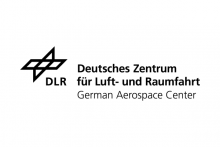
The DLR Institute of Atmospheric Physics (IPA) is part of the German Aerospace Centre. IPA investigates the physics and chemistry of the global atmosphere from the Earth's surface up to the upper boundary of the middle atmosphere at about 120 km height. The institute covers a broad variety of methods comprising the development of sensors, observations on different spatial scales (local to global), analysis, theory construction, and atmospheric chemistry and earth system modelling. With these competences the institute works both on fundamental and application-oriented problems, where long-term basic research in the forerun of applications is emphasized. About 140 people work in the institute, which was founded in 1962 and is structured in six departments. One focus is the development and application of new sensors for measuring the greenhouse gases methane and carbon dioxide for both aircraft and spaceborne applications. This includes hosting the Co-Principle Investigator for MERLIN, a planned DLR/CNES methane lidar mission. An airborne lidar system (CHARM-F) to measure CH4 and CO2 was developed for the German research aircraft HALO, which has participated in European field experiments to quantify regional gradients of these greenhouse gases.
DLR will be involved in CoCO2 through the generation of biospheric CO2 fluxes using a high-resolution diagnostic model. Atmospheric plume modelling and flux inversions will also be carried out, focussing on the regional/national level. Furthermore, Julia Marshall is co-leading WP7, coordinating the use of in situ measurements.